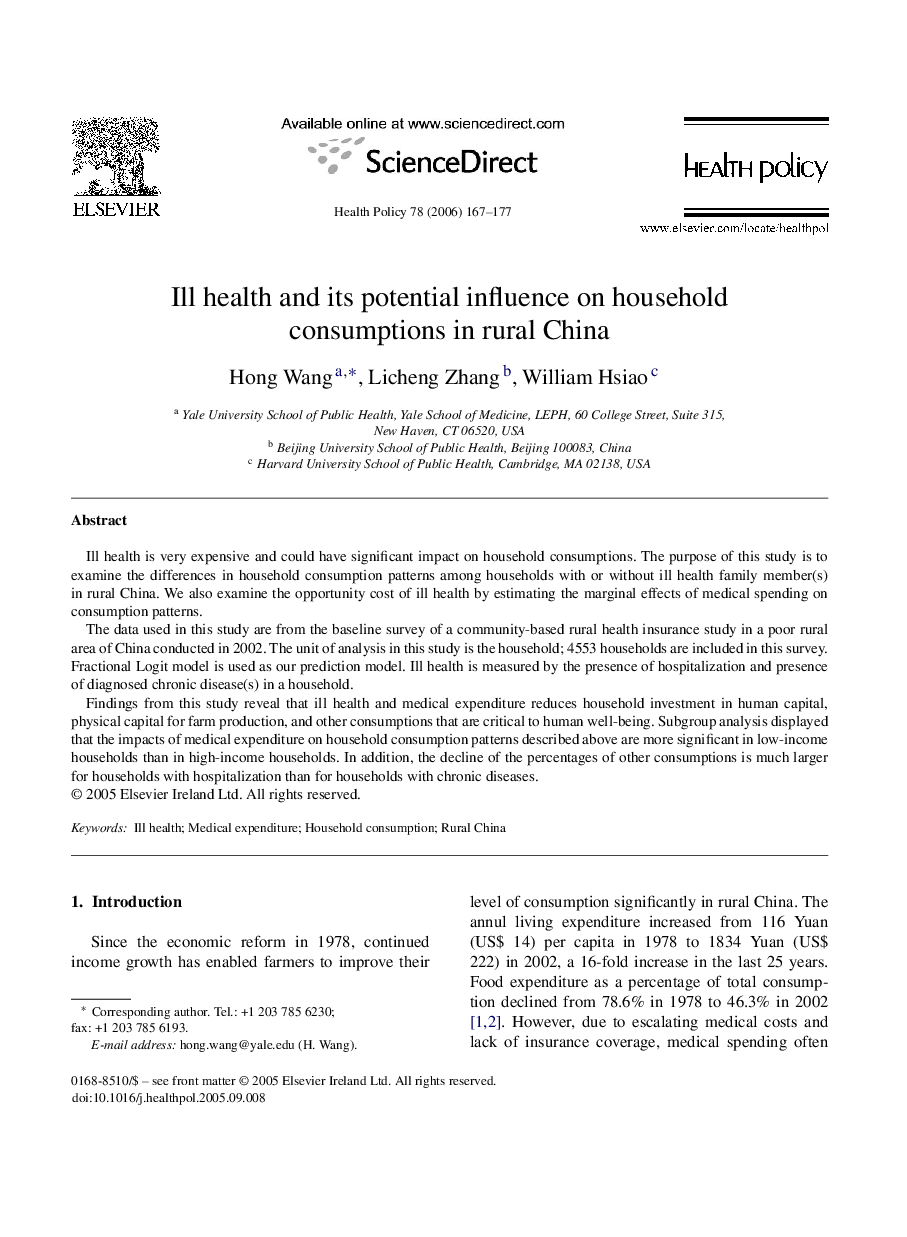| Article ID | Journal | Published Year | Pages | File Type |
|---|---|---|---|---|
| 4199022 | Health Policy | 2006 | 11 Pages |
Ill health is very expensive and could have significant impact on household consumptions. The purpose of this study is to examine the differences in household consumption patterns among households with or without ill health family member(s) in rural China. We also examine the opportunity cost of ill health by estimating the marginal effects of medical spending on consumption patterns.The data used in this study are from the baseline survey of a community-based rural health insurance study in a poor rural area of China conducted in 2002. The unit of analysis in this study is the household; 4553 households are included in this survey. Fractional Logit model is used as our prediction model. Ill health is measured by the presence of hospitalization and presence of diagnosed chronic disease(s) in a household.Findings from this study reveal that ill health and medical expenditure reduces household investment in human capital, physical capital for farm production, and other consumptions that are critical to human well-being. Subgroup analysis displayed that the impacts of medical expenditure on household consumption patterns described above are more significant in low-income households than in high-income households. In addition, the decline of the percentages of other consumptions is much larger for households with hospitalization than for households with chronic diseases.
